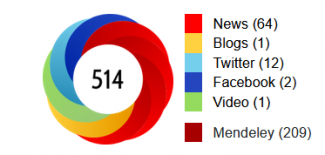The data is collected annually since 2012 and analysed for informational and evaluation purposes by the University to understand scholarly research behaviour, e.g. the research trends and strengths, project funding, our collaborations and authorship, the type of research output generated and their dissemination and impact, uptake into practice, and our efforts towards Open Science, in terms of increase in Open Access publications.
It is important to use them in combination, taking into account the context and associating them with a qualitative assessment, as recommended by international initiatives like DORA (San Francisco Declaration on Research Assessment) and the Leiden Manifesto.
Some of the indicators we are specifically interested in:
The number of citations measures the number of times a document has been cited by other scientific publications, within a given corpus and over a given period of time. This number, therefore, differs depending on the databases (Web of Science, Scopus, Google Scholar, etc.), which do not have the same scope.
In ORBilu we offer citations from different databases :
These are alternative measures aimed mainly at highlighting the use of scientific publications on the Internet, using, among other things, shares on social networks (Twitter (X) and LinkedIn), downloads on platforms such as Mendeley and mentions in blogs or wikis.

This index attempts to measure both the scientific productivity and the apparent scientific impact of a scientist. According to Hirsh: "A scientist has index "h" if h of his/her papers have at least h citations each, and the other papers have no more than h citations each."
In ORBilu, the "h" index is based on the number of citations of the references listed in the report. For each citations provider (Scopus, OpenCitation etc.) there is a corresponding h-index. The h-index appears in the bibliometric synthesis of the publications report.